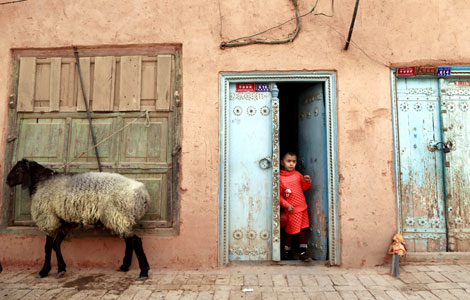Comics not just for kids
Updated: 2013-11-21 07:21
By Deng Zhangyu (China Daily)
|
|||||||||||
The promising comic and animation market in China is in urgent need of a rating system to protect children from unsuitable content and to prepare the industry for future development overseas, said experts at the International Forum on the Development of Animation and Games Industries on Nov 7 in Beijing.
"I hope I will have access to comics made for my age group when I am 60. The comic and animation industry is not only for children," said Wang Ning, general manager of Beijing Total Vision Culture Spreads Company.
Wang was referring to the recent debate on whether there should be a rating system in China's comic and animation industry. The discussion was prompted by China Central Television's criticism of the violent and sexual content in many Chinese comics and animations in September.
The idea that comics and animation are for children is deep-rooted in many Chinese parents' minds, and it is common to see all kinds of comics and animation on the shelves of children's sections in bookshops that have not been graded, despite some content being for adults, said Wang.
Japan and some Western countries have a rating system that classifies different content into different age groups. Some animations in the West have parental-guidance warnings or restrict viewers under a certain age.
However, in China, all animation is directed at the children's market. "It's bad for our children. It's also bad for the whole industry's future development," said Wang.
Authors of comics and animations don't know who their readers and viewers are, which influences their creation, Wang added.
As China puts cultural and creative industries into its 12th Five-Year Plan (2011-15), the country has taken many measures both in terms of policies and finance to boost the sector. Comic and animation zones have mushroomed in more than 40 cities since 2010.
The output of the animation industry reached 75 billion yuan ($12.3 billion) last year, according to Gao Zheng, deputy director of the cultural industry department of the Ministry of Culture.
The output of Beijing's animation and game industry in 2012 was 16.7 billion yuan, up 29 percent from 2011, that includes exports valued at 1.56 billion yuan, accounting for 60 percent of the whole industry in China, said Mei Song, director of Beijing's cultural creative industry promotion center funded by the government.
China's comic and animation industry is in its infancy in the cutthroat international market. More important than even the much-needed rating system is the need for Chinese comics and animation that appeal to consumers in the West, said Nicolas Grivel, founder of the French company Nicolas Grivel Agency.
Grivel said China is now the world's most promising animation market. He has exported dozens of Chinese comics to European countries. Among the comics he helps publish in the West, the most popular are those that tell stories about the lives of ordinary young Chinese people.
Grivel said people in the West are curious about how young Chinese live, their dreams and desires. These stories have proved more popular than long histories promoted by scholars in China.
"You have to go deep into your culture and find something unique, instead of creating productions catering to the international market," said Grivel.
dengzhangyu@chinadaily.com.cn
(China Daily 11/21/2013 page22)
Today's Top News
Rupert Murdoch, wife reach divorce deal
Xi seeks greater China-EU cooperation
Spokesmen system expands in army
SCO meeting to focus on anti-terror
Roadmap 'will curb local debts'
Govt mulls measures to reform
Obama's rating drops to all-time low
In Asia-Pacific, HIV still high, report says
Hot Topics
Lunar probe , China growth forecasts, Emission rules get tougher, China seen through 'colored lens', International board,
Editor's Picks

|

|

|

|

|

|





